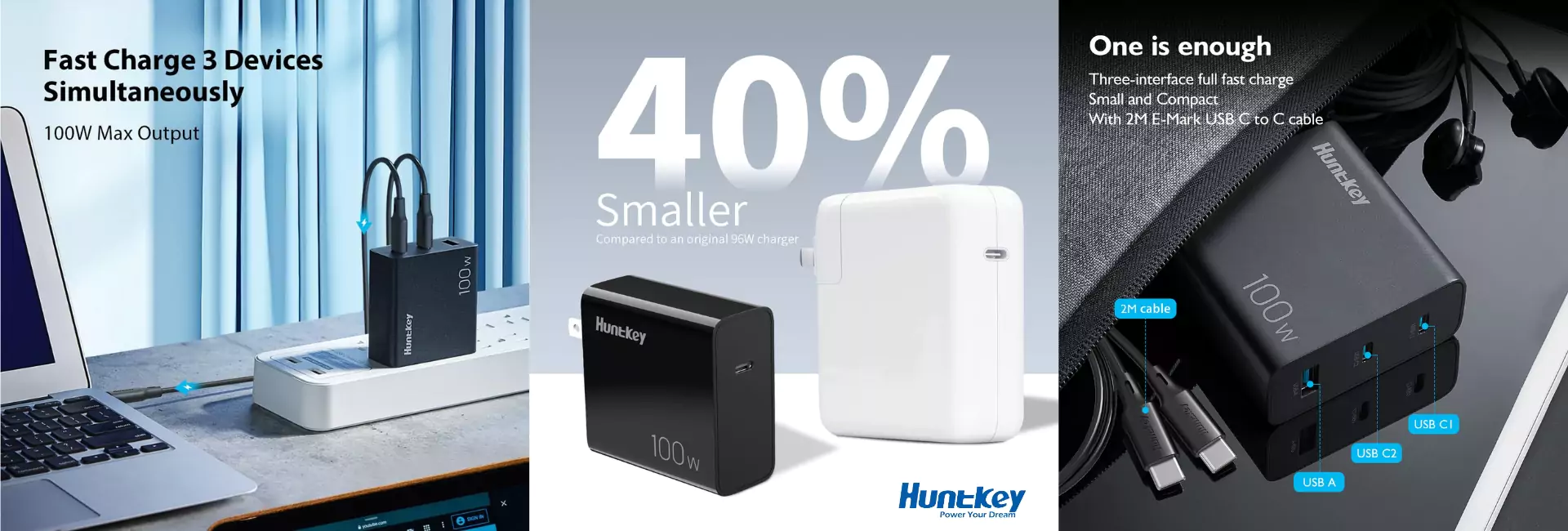
Product categories
- Components 0
- Consumer Electronic Accessories 0
- Cable 0
- Charger 0
- Docking Station 0
- Power bank 0
- Monitors 0
- Peripheral 0
- Storage 1
- DRAM 0
- Flash Memory 0
- HDD 0
- Memory Card 0
- SSD 0
No products were found matching your selection.
Chargers
In the consumer electronics sector, chargers play a critical role in powering and maintaining devices such as smartphones, laptops, tablets, wearables, and other gadgets. As technology continues to evolve, chargers have also adapted to accommodate new device requirements, from simple USB cables to advanced wireless charging systems.
- Types of Chargers
- Wired Chargers: The most common type, wired chargers rely on cables that connect to a device's charging port. They come in various forms, including USB-A, USB-C, Lightning (for Apple devices), and proprietary connectors. Wired chargers are known for their reliability, fast charging capabilities, and universal compatibility (depending on the port).
- Wireless Chargers: Wireless charging, also called inductive charging, is growing in popularity due to its convenience. It allows devices to charge without physically plugging them in, simply by placing them on a charging pad. Popular in smartphones, smartwatches, and earbuds, wireless chargers use Qi (pronounced "chee") technology, enabling inductive power transfer.
- Fast Chargers: As devices become more power-hungry and users seek quicker recharge times, fast chargers have emerged. These chargers use technologies such as Qualcomm Quick Charge, USB Power Delivery (USB-PD), and Apple's fast-charging protocols to deliver higher wattages and reduce charging times.
- Power Banks: These portable chargers store electricity in an internal battery and can charge devices on the go. Power banks are especially useful for users who need to charge their phones or tablets away from a power outlet.
- Car Chargers: These are specifically designed to plug into a car’s cigarette lighter or USB port, providing a way to charge electronic devices while driving.
Chargers
In the consumer electronics sector, chargers play a critical role in powering and maintaining devices such as smartphones, laptops, tablets, wearables, and other gadgets. As technology continues to evolve, chargers have also adapted to accommodate new device requirements, from simple USB cables to advanced wireless charging systems.
- Types of Chargers
- Wired Chargers: The most common type, wired chargers rely on cables that connect to a device's charging port. They come in various forms, including USB-A, USB-C, Lightning (for Apple devices), and proprietary connectors. Wired chargers are known for their reliability, fast charging capabilities, and universal compatibility (depending on the port).
- Wireless Chargers: Wireless charging, also called inductive charging, is growing in popularity due to its convenience. It allows devices to charge without physically plugging them in, simply by placing them on a charging pad. Popular in smartphones, smartwatches, and earbuds, wireless chargers use Qi (pronounced "chee") technology, enabling inductive power transfer.
- Fast Chargers: As devices become more power-hungry and users seek quicker recharge times, fast chargers have emerged. These chargers use technologies such as Qualcomm Quick Charge, USB Power Delivery (USB-PD), and Apple's fast-charging protocols to deliver higher wattages and reduce charging times.
- Power Banks: These portable chargers store electricity in an internal battery and can charge devices on the go. Power banks are especially useful for users who need to charge their phones or tablets away from a power outlet.
- Car Chargers: These are specifically designed to plug into a car’s cigarette lighter or USB port, providing a way to charge electronic devices while driving.

